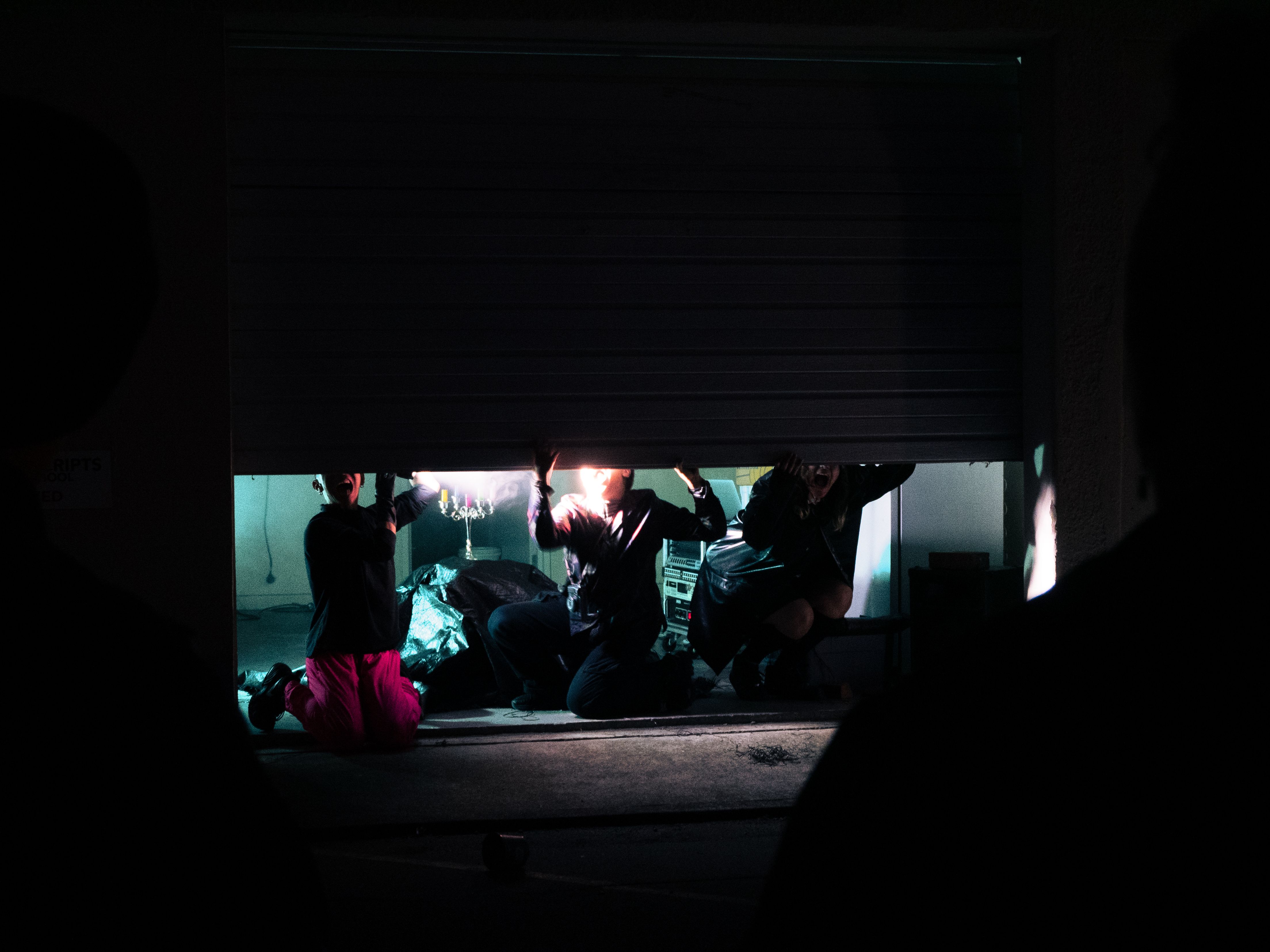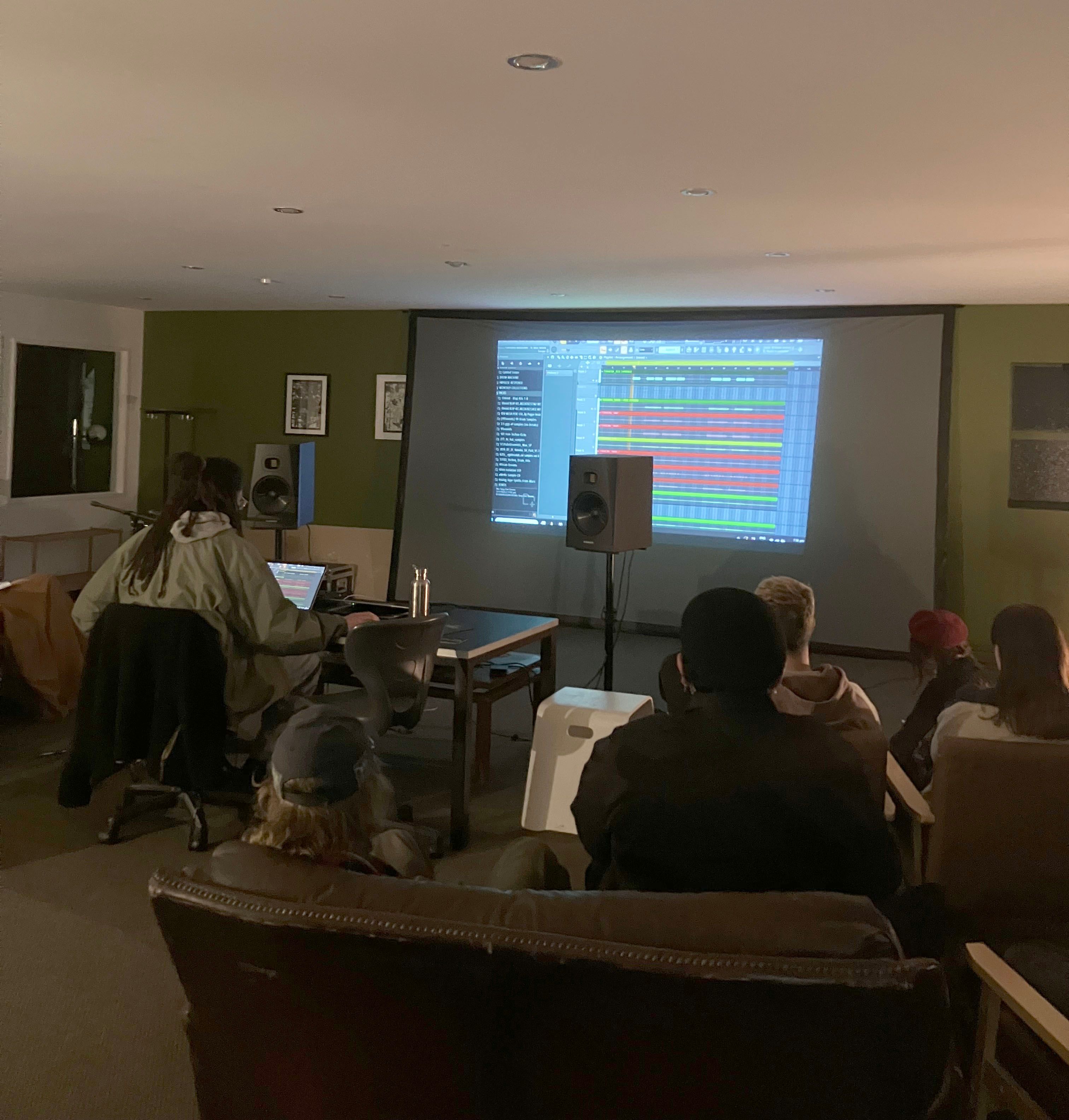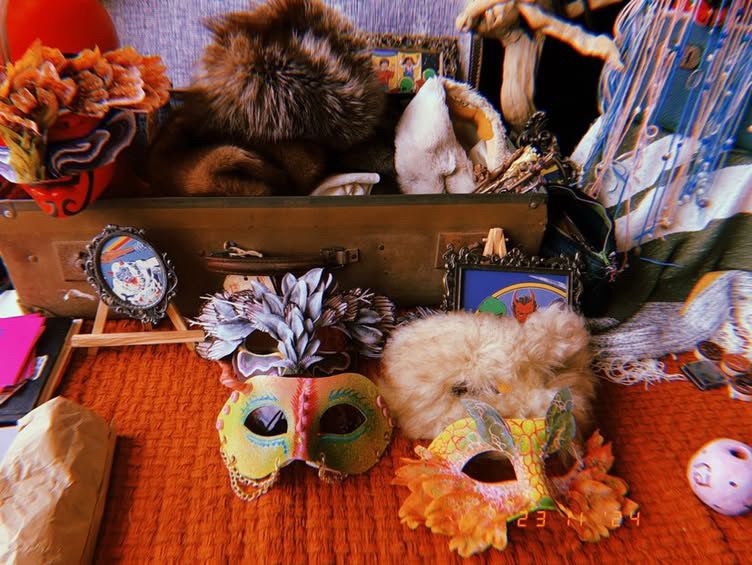Te Wā and the Art of Space-Making
Outcomes are antithetical to the intentions behind a new fluid shared space in Ōtautahi. Its founders discuss its beginnings, aspirations, and highlights so far.
Written by
Pathfinders is a series spotlighting artists and organisations taking the road less travelled by adopting new or innovative approaches.
Hero image: Josiah Morgan and Bea Gladding at Te Wā. (Photo: Nathan Joe).
My hometown of Ōtautahi Christchurch is plagued by a rather patchy reputation, one centered around its chilly temperature and conservative, colonial history. It’s a reputation rightfully acknowledged, but it tells an incomplete story. This looming shadow masks a complex, rich history of communities making work within an independent and underground context. Across a wide variety of artforms, counterculture has been part of Ōtautahi’s subterranean identity as much as the thorny surface aspects we know well. These rich histories, past and present, include the household label Flying Nun, the avant-garde Free Theatre, the corners of the Pasifika writing community of FIKA Writers, and the experimental performance festival TinyFest, to name a few.
A recent addition is Te Wā, a multidisciplinary art space led by Māori creatives. I sat down with two of the core team, Bea Gladding (Ngāti Porou, Ngāpuhi) and Josiah Morgan (Kāi Tahu, Ngāti Maniapoto), to discuss its new beginnings, ongoing aspirations, and reflect on my own engagement with the space.
Unexpected beginnings
Te Wā’s Creative Director, Bea Gladding, wasn’t actively looking for a space when she discovered what would become their venue. It was one of those serendipitous happenings where she was at the right place at the right time. She was meeting up with some mutual acquaintances, and these mutuals happened to own an office property next door to their apartment that needed to be filled. The unplanned viewing coincided with Bea’s recent fantasy – filling a gap she saw in the ecosystem of Ōtautahi’s art scene.
When I first heard about these plans to open Te Wā back in 2024, I was struck by my own confusing cocktail of anxiety and excitement. It was so counter to the narratives I was offered in Tāmaki Makaurau, where leasing a space might be seen as a burden, a liability, an expense. When most art organisations are struggling with the costs of running a venue, it seems contrarian to start one. Yet, ten months in, Te Wā is alive and kicking.
Rewinding for a sec, the first major step was raising money to take over the space, which began with a Boosted campaign that exceeded their $25,000 target goal. This would go on to cover initial fit out costs, lease costs, and operating expenses.
Since the initial Boosted campaign, they’ve been successful with 100% of their funding applications. It’s clear that the alignment between funders, community and Te Wā is strong. The need is felt, and the support is enthusiastic.
Role models
When Bea first set out on the mission to start Te Wā, she was surprised by the often contradictory advice she received from various people. She found much advice was peppered with pessimism, often suggesting she shouldn’t bother with certain avenues or funds because she wouldn’t be successful. It’s here she realised the importance of not simply listening to people because they are experienced, but because they embody the values you align with. This taught her a lot about only “taking advice from the people that I actually want to be like.”
Bea cites several influences including Tāmaki Makaurau’s Audio Foundation and Wheke Fortress as spaces or communities in which place artists at the center. Conversations with Coco Solid, Wheke’s co-director, were particularly formative for Bea. Seeing the way Audio Foundation exists – so irreverent and truly unconcerned with the mainstream, was eye-opening.
Never having run a venue, I imagined it must have been a steep learning curve for Bea, but she sees it as a natural progression of her entire practice. Ultimately she has always related back to “community” and has been about “people first.”
The space itself
Located in Sydenham, a concrete jungle of a suburb with side streets full of industrial units and warehouses, Te Wā would be easy to miss. From outside it looks like an ordinary, two-storey office-style building. The venue functions like something between a co-working space and community hub. As someone who spent his formative creative years in Tāmaki Makaurau, the premium on space is often a persistent issue in our sector, and the spaciousness of Te Wā cannot be overstated.
On the ground floor, there is a main lobby that is often used for events, most recently for a book launch by Dead Bird Books, as well as for movement classes because of a dance mat that was kindly donated to them. Upstairs is a more traditional lounge space equipped with a kitchenette, the beginnings of a recording studio, and other smaller rooms. Beyond the space’s physical attributes, Bea talks about how they see Te Wā as a living organism. And not simply as a metaphor, but truly as something with a life of its own.
Who is it for?
At its most basic, Te Wā is for creatives who simply need space. The function is to provide space at low or no cost with no expectation of outcomes. Outcomes are antithetical to the intentions of the space. In Josiah’s words, it is “quite anti-capitalist” and “people aren’t often used to spaces where they’re not expected to give something in return.”
The communities Te Wā most want to serve are Māori, BIPOC, and/or queer. While that isn’t exclusively so, Bea and Josiah both want to ensure that focus is always being met and developed. At the moment, self-programming is a large part of the kaupapa with very little curatorial restrictions. Te Wā welcomes any use of the space within reason. It’s not about what you want to do there, it’s about who you are. This responsiveness is both artistically-inclined, as well as pragmatic: “We don’t want to support every artist in the same way because not every artist needs the same thing,” Bea says.
My own experience with Te Wā has been an immeasurably positive one. Earlier this year, I gathered a small crew of queer Asian creatives (under the moniker GAMER) to work at Te Wā with me across a week. In that week, we used the space to talk and educate each other about our respective practices, occasionally flexing our making muscles. I don’t remember the last time I felt freed of outcomes and simply given space and support to make for the sheer pleasure of it. We were only accountable to ourselves. And sometimes that is enough.

Breaking down silos

Perhaps it’s inevitable that Te Wā invites a multidisciplinary approach to art-making, beyond a single artform or community. After all, Bea and Josiah’s very own practices span everything from DJing, music producing, theatre-making, performance art, acting, poetry, and more. It’s a broad church that encourages slippages between boundaries.
At Te Wā, the fluidity of the shared space contributes to that. They encourage artists to overlap and engage with each other in the space so that the space is rarely exclusively yours. While you have a meeting in one room, another group is rehearsing or workshopping in another. It’s not a glitch but a function. Josiah sees "negotiating each other’s practices” as an invitation rather than a challenge.
Bea frames her ongoing relationships with people, rather than organisations, in relation to Te Wā. Formal partnerships are less interesting than strong interpersonal relationships. She names people first, including Jamie Hanton at the Christchurch City Council and Sarah Aspinwall at CoCA, James Tapsell-Kururangi at Physics Room and Juanita Hepi at Te Whare Tapere, as key supporters.
This relational approach strikes me as the beating heart of Te Wā.
Highlights
While still in its infancy, Te Wā has already built a community of regulars who populate and surround it. The highlights they’ve had the pleasure of witnessing are wide in variety. For Bea, the Cryptids Club – a takaktāpui group that simply needed a space to develop their work – was an early example of the sort of engagement they wanted to see. For Josiah, the Art for Palestine event was an overwhelming success in bringing a large audience to the space, as well as being in alignment with their values. Independently, Josiah runs a regular silent reading group on Sundays that they find simple pleasure in facilitating.
The variety of the types of events speaks to the undefined parameters of the space. It is whatever you wish to make of it.

An invitation
For those unsure how to engage or what they might do there, Josiah invites people to simply get in touch and make time to have a coffee and chat. Even that simple act is using the space as it is intended.
The team is more than optimistic and hopeful, they’re ambitious. There is a genuine sense of vast potential ingrained into a space unburned by institutional baggage and history. And while no slate can ever be truly clean, nor should it be, Te Wā is a welcome addition to the ongoing conversation and future identity of the city. Perhaps it's cities like Ōtautahi where the most impact can be made. Cities with a desire to rewrite old narratives.
When asked how she thinks it’s going, Bea replies with ease, “It feels right.” I couldn’t agree more.